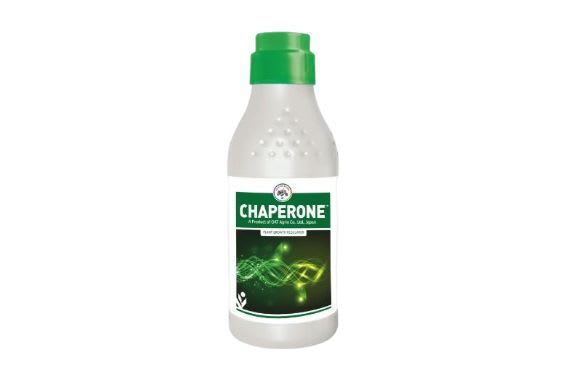
The Role of Chaperone Sodium Para Plant Growth Regulator
Learn about the role of Chaperone Sodium Para as a plant growth regulator and how it influences plant development and physiology.
In the world of plant biology, finding ways to improve growth and development can lead to surprising results. One of these is Chaperone Sodium Para, an important part of controlling how plants grow. This blog explains how this compound works as a plant growth regulator and how it impacts different aspects of how plants function.
First, let us understand what is a plant growth regulator.
What is a Plant Growth Regulator?
Plant growth regulators (PGRs) are natural or manufactured substances that control plant growth and development by altering physiological processes. These plant growth regulator products are often used in agriculture, horticulture, and plant science to improve, repress, or change plant processes such as germination, growth, blooming, fruit ripening, and general plant health.
Chaperone Sodium Para: Method of Action
The principal method of action of this plant growth regulator product is its ability to change plant hormones, namely auxins and cytokinins. These hormones regulate cell division, elongation, and differentiation. By regulating the balance and activity of these hormones, Chaperone Sodium Para can influence plant growth and development.
Auxin Regulation
Chaperone Sodium Para plant growth regulator has been shown to increase the activity of auxins in plants. Auxins are responsible for a number of growth processes, including:
- Cell elongation
- Apical dominance
- Root initiation
- Vascular tissue development
Cytokinin Interaction
In addition to its effects on auxins, this plant growth regulator interacts with cytokinins. Cytokinins are plant hormones that mainly stimulate cell division and postpone senescence. The compound's effect on cytokinin activity leads to:
- Increased cell division rates
- Delayed leaf senescence
- Improved chlorophyll retention
- Increased branching in several plant species
Photosynthesis Enhancement
One of the most important effects of Chaperone Sodium Para is its ability to increase photosynthetic efficiency. This is done with the help of numerous mechanisms:
Increased chlorophyll content: The chemical stimulates the production and retention of chlorophyll, the main pigment responsible for light absorption during photosynthesis.
Improved CO2 fixation: This plant growth regulator increases the activity of essential enzymes involved in carbon fixation, allowing plants to use ambient carbon dioxide more efficiently.
Enhanced electron transport: The molecule has been found to improve the electron transport chain in chloroplasts. This results in more efficient energy generation during photosynthesis.
All these factors combine to improve photosynthetic rates, resulting in higher biomass output and total plant growth.
Nutrient Uptake and Utilization
This plant growth regulator also helps plants absorb and use nutrients more efficiently. This is especially noticeable in:
Root growth: The chemical enhances auxin activity, promoting more widespread root system development, which improves the plant's capacity to absorb water and nutrients from the soil.
Nutrient transport: Another result of increased auxin activity is improved vascular tissue growth. This allows for more efficient nutrient transportation throughout the plant.
Metabolic efficiency: Chaperone Sodium Para has been shown to improve different metabolic processes, helping plants use ingested nutrients for growth and development more efficiently.
Stress Tolerance
In addition to its growth-promoting properties, Chaperone Sodium Para increases plant tolerance to a variety of environmental stressors. This includes:
Drought resistance: The compound's potential to increase root growth and enhance water usage efficiency helps in drought tolerance.
Temperature stress: Plants treated with Chaperone Sodium Para showed increased resistance to both high and low-temperature stress.
Salinity tolerance: Some studies have shown that the chemical can help reduce the harmful effects of soil salinity on plant development.
Conclusion
Chaperone Sodium Para, the plant growth regulator product, offers a major improvement in our abilities to control and maximize plant development. Its diverse impacts on hormone balance, photosynthesis, nutrient utilization, and stress tolerance make it an important tool in modern agriculture. As we continue to confront difficulties such as climate change, population increase, and the need for sustainable agricultural techniques, chemicals like Chaperone Sodium Para come up as the best answers.
Buy Chaperone Sodium Para from Spray Karo today.
FAQs
1. What is a plant growth regulator (Chaperone Sodium Para), and what are its effects?
Chaperone Sodium Para, also referred to as sodium paranitrophenolate, is an artificial plant growth regulator. It influences plant hormones such as auxins and cytokinins to increase photosynthesis efficiency, optimize photosynthesis nutrient uptake, improve utilization, and increase stress tolerance. These effects result in improved plant growth, development, and yield.
2. Is Chaperone Sodium Para suitable for food crops?
When applied as directed, Chaperone Sodium Para is generally safe to be used on food crops. However:
- Follow manufacturer recommendations and local regulations.
- Always adhere to recommended dosages, application times, and pre-harvest intervals as specified.
- Consult agricultural specialists or extension services for advice tailored specifically to each crop.
- As with any agricultural input, proper use is key to ensure safety and efficacy.
3. How can Chaperone Sodium Para support sustainable agriculture practices?
This plant growth regulator promotes sustainable agricultural practices:
- Reduce fertilizer requirements through improved nutrient uptake.
- Enhance water use efficiency for water conservation purposes, and potentially reduce pesticide needs by improving plant health.
- Enhance yields that lead to more effective land usage and thus decrease fertilizer requirements.
- Potentially decrease pesticide needs by encouraging better plant health.
- Potentially enhance crop yields that lead to greater land efficiency.
4. What are the potential drawbacks to Chaperone Sodium Para?
While Chaperone Sodium Para offers many benefits, possible drawbacks could include:
- Variability in crop responses requires tailoring strategies specifically to each plant species.
- If incorrect dosage or timing occurs, there may also be potential negative side effects.
- Dependency risk, if not implemented alongside other good agricultural practices.

